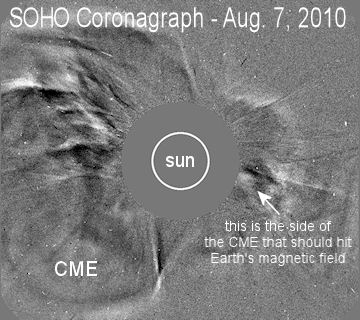Where did the “Dog Days of Summer” term come from & other celestial treats this week.
The dog days of summer are upon us and you might think that they have something to do with hot and humid weather. Well that isn’t exactly where the term originated from; the dog days of summer are actually July 3 through August 11. Those days are the 20 days before and 20 days after the “Dog” star Sirius rises and falls in conjunction with sun. Sirius is the brightest star in the constellations Canis Major. The ancients Romans believed that its heat added to the heat of the sun, creating a stretch of hot and sultry weather. During the time between July and August the “dog” star rising with our sun made the ancients think the heat of two stars where making us hotter. In modern times we know that there is no heat generated from this very distant start, but the term stuck. So even in modern times we consider the hot and muggy time of the summer between late July and mid-August as the dog days of summer.
2010 Perseid Meteor Shower and Viewing Tips
Quadrantids on January 4
–>The next meteor shower is the Perseids on the night of August 12. The Moon is just a couple of days past new at the shower’s peak, so there will be no moonlight to interfere with the faint meteors. The shower should reach its peak in the hours after midnight, with a maximum of a few dozen meteors visible per hour.
If you live near a brightly lit city, drive away from the glow of city lights and toward the constellation from which the meteors will appear to radiate.
For example, drive north to view the Leonids. Driving south may lead you to darker skies, but the glow will dominate the northern horizon, where Leo rises. Perseid meteors will appear to “rain” into the atmosphere from the constellation Perseus, which rises in the northeast around 11 p.m. in mid-August.
After you’ve escaped the city glow, find a dark, secluded spot where oncoming car headlights will not periodically ruin your sensitive night vision. Look for state or city parks or other safe, dark sites.
Once you have settled at your observing spot, lie back or position yourself so the horizon appears at the edge of your peripheral vision, with the stars and sky filling your field of view. Meteors will instantly grab your attention as they streak
This week we had another Coronal Mass Ejection from the sun
From NOAA:
Aug 9, 2010. A minor radio blackout event occurred at 2 pm EDT when an M1 flare erupted on the Sun. Associated with the flare was a coronal mass ejection which is now headed towards Earth and is forecast to arrive on August 10. Earth is expected to take only a glancing blow and no major geomagnetic storming is expected. There was a slight increase in the number of protons, but they remain well below any alert threshold
Spaceweather alos has a few notes too:
INCOMING CME: The solar eruption of August 7th might affect Earth after all. Newly-arriving data from the Solar and Heliospheric Observatory (SOHO) show a CME heading our way with a significant Earth-directed component. Click on the image to launch a “difference movie” of the expanding cloud:
The impact of this lopsided CME probably won’t trigger a major geomagnetic storm—but the SOHO data show it could be bigger than expected. High latitude sky watchers should be alert for auroras when the cloud arrives probably on August 10th.
You can read more at spacewather.com and the Space weather prediction center.



